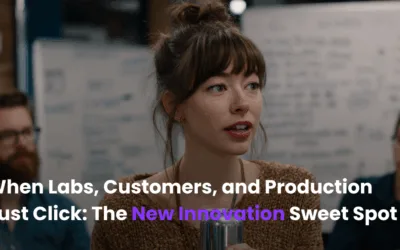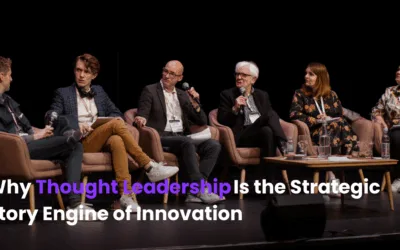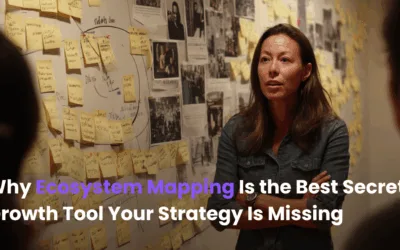For decades, businesses have relied on the VUCA model (Volatile, Uncertain, Complex, and Ambiguous) to describe our fast-changing world. Today, all that uncertainty has only deepened. Futurist Jamais Cascio argues that a different framework, known as BANI (Brittle, Anxious, Nonlinear, and Incomprehensible), is more relevant.
Companies are no longer just navigating market shifts and technological advancements. They must also respond to highly unpredictable global events (pandemics, wars – or Gaza as the ‘Riviera of the Middle East’), economic instability, increased extreme weather and environmental crises as well as unpredictable social change.
With all this uncertainty, it should perhaps be unsurprising that traditional learning models are no longer effective in preparing workers for how to respond and adapt. Most corporate training still focuses on received curriculum and basic skill sets that were designed for economic and political stability. But when markets are shifting overnight, knowledge that was relevant last year, or even last quarter, can quickly become obsolete.
Collaborative learning provides an alternative to the static learning approach. When organisations embrace knowledge-sharing, co-creation, and continuous learning, they build teams that are able to respond to disruption in real time. This approach enables faster problem-solving and supports innovation under pressure. Instead of waiting for solutions to be handed down, employees actively exchange insights, experiment with ideas, and co-develop strategies that help organisations stay adaptable.
Beyond improving innovation, collaborative learning is becoming a critical survival mechanism. In a BANI world, resilience is not about predicting the future. It is about being prepared to evolve when the unpredictable happens.
Case Study 1 in Collaborative Learning: Healing Forests
The Healing Forests initiative, a collaboration between the World Wildlife Fund (WWF) and Johnson & Johnson, is a powerful example of how collaborative learning has helped to address deforestation issues. By linking deforestation to human health and economic resilience, the initiative acknowledges the interconnected and unpredictable nature of modern challenges.
Working on the BANI principle, deforestation may be seen as contributing to brittle ecosystems, where environmental degradation weakens the natural defences against disease transmission. And as human activity encroaches on wildlife habitats, the risk of zoonotic diseases increases, which in turn creates what could be deemed anxious and fragile global health conditions. Addressing these issues requires collaborative learning between environmental scientists, healthcare professionals, policymakers, and local communities.
By applying cross-sector knowledge-sharing, Healing Forests does not attempt to predict every possible outcome of deforestation. Instead, it builds adaptive strategies that help communities and organisations prepare for and respond to unforeseen consequences. This learning-based approach makes conservation not just an environmental priority but a tool for improving public health and economic resilience in an uncertain world.
Case Study 2 in Collaborative Learning: Australian Industry Energy Transitions Initiative
The Australian Industry Energy Transitions Initiative (Australian Industry ETI) demonstrates how collaborative learning can drive innovation and adaptability in addressing complex challenges like industrial decarbonisation. The platform unites 18 industry partners, representing approximately 22% of Australia’s industrial emissions and about 32% of the market value of the ASX100, coordinating learning and action towards net zero emissions supply chains.
By fostering cross-sector collaboration among companies such as BHP, BlueScope Steel, and Rio Tinto, the Australian Industry ETI enables participants to share knowledge, develop innovative solutions, and implement strategies that reduce emissions across various industries. This collective approach not only accelerates the transition to a low-carbon economy but also enhances the resilience and adaptability of these organisations in a rapidly changing global environment.
Case Study 3 in Collaborative Learning: Paypal Technology Leadership Program
In a smaller case study, PayPal facilitated a three-month partnership between a data scientist and a risk decision scientist. This collaboration aimed to enhance the company’s risk management strategies by integrating diverse expertise. The data scientist contributed advanced analytical techniques, while the risk decision scientist provided domain-specific knowledge. Together, they developed innovative solutions that improved PayPal’s ability to identify and mitigate potential risks.
In a rapidly changing and uncertain economic climate, even small scale collaborative sharing and learning can transform how a business operates.
Collaborative Learning as a Competitive Necessity
In a world shaped by unpredictability, collaborative learning is no longer just an asset—it is a necessity. Whether it is conservation efforts, industrial transformation, or risk management, the examples of collaborative learning above demonstrate how it can drive innovation, enhance resilience, and support long-term adaptability.
What stands out in each example is that no single organisation, industry, or professional discipline holds all the answers. Solutions emerge when knowledge is shared, challenged, and developed collectively. Businesses that cultivate this culture of peer-driven learning and cross-functional collaboration will be far better positioned to navigate uncertainty and turn disruption into opportunity.
In the end, survival in a BANI world is not about having all the answers in advance. It is about being able to learn and adapt faster than the challenges that emerge.



